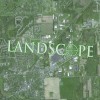Wildlife
Maps show spread of aquatic invasive species over time
|
The Nature Conservancy has animated how six invasive species have spread across the Great Lakes over time. The group has created six maps that show population increase and spread since the appearance of each species in the Great Lakes basin and beyond. Sea lamprey, the first of the six invasive species to appear in the area, initially showed up in Lake Erie in 1921. The map shows the population of the fish expanding into the rest of the Great Lakes up until present day. Also included in the maps are Asian carp, zebra and quagga mussels, round goby, Eurasian Ruffe and black carp.









